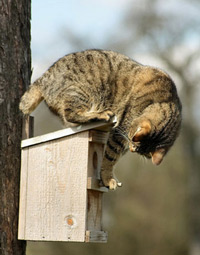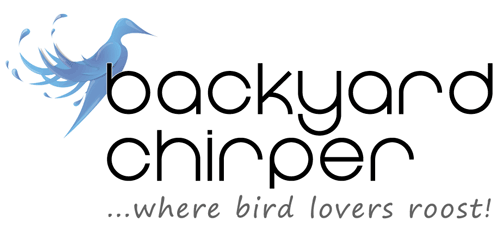Each year, house cats kill about 500 million birds. Cats and other predators like raccoons are the number one threat to birds in urban and suburban areas, accounting for more deaths than collisions with cars and man-made structures. Keeping your birdhouses, bird feeders and nesting boxes protected from cats is important in helping native bird species remain secure and luring them back to your yard again. If you're interested in shielding your backyard birds from predators, here are a few recommendations.
Keep your cat indoors

Many bird enthusiasts are also animal lovers, so it's not a surprise that backyard birders have cats. If you have a cat, the single best way to prevent them from hunting birds that are feeding or nesting in your yard is to keep them indoors. The American Bird Conservancy (ABC) has a program aimed at keeping cats inside at benefit to both animals. The ABC argues that cats who live indoors have longer lives than outdoors cats, and they don't kill as many birds. If you can't bring your cat indoors, at least make sure it has a collar with a bell, so the birds hear when it's near.
Select the right location for birdhouses and feeders
Bird lovers with backyards that are frequented by feral cats will need to take additional steps to protect birdhouses and feeders. First, selection a birdhouse location conducive to bird safety. For example, place the house or feeder on a tall bird pole in a clearing. This prevents cats and raccoons from having a hiding spot to leap at birds unexpectedly. Also, putting your bird house on a tall pole will make it difficult for cats to climb to the very top without the birds getting frightened off. Lastly, avoid affixing bird houses to trees where raccoons are able to jump down and attack birds.
Consider getting baffles and other equipment
Although squirrels are not predators to birds, they have an annoying propensity to steal bird seed. Attaching a baffle or other squirrel deterrents to the pole of your birdhouse will not only prevent squirrels from eating your bird food, but will also act as a buffer between the birds and predators. Another great way to protect your birds from cats or raccoons leaping from trees is a birdhouse or feeder cover. The main function for this is to guard the birds from rain and prevent squirrels from sneaking down hanging feeders, but it also puts a shield over the birds for added protection.
Get good nesting boxes
Birds who are nesting and baby birds are at the greatest risk of being attacked by cats. A study by The Journal of Ornithology reported that in suburban areas, cats are the number one cause of baby bird deaths. Though you can't necessarily force birds to nest in safer areas, you can encourage them to nest in one of your nesting boxes. Make sure your box is placed in an area where the birds will want to nest, but also be strategic in the area you place it. For example, don't place it near an area cats frequent or a place where it might be easy for cats to get to. Depending on the type of bird species that nest in your yard, an ideal nesting box should have holes just small enough for that bird to fit into.

